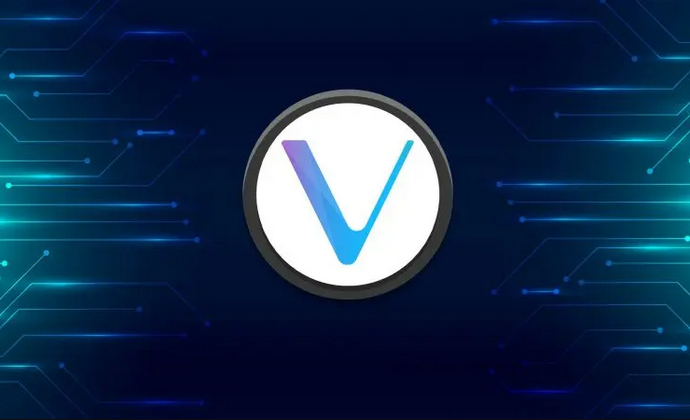-
 Bitcoin
Bitcoin $103,090.1585
-1.13% -
 Ethereum
Ethereum $2,579.2413
-1.43% -
 Tether USDt
Tether USDt $1.0001
0.00% -
 XRP
XRP $2.5456
-0.36% -
 BNB
BNB $651.1928
-1.65% -
 Solana
Solana $175.0602
-2.07% -
 USDC
USDC $0.9999
-0.01% -
 Dogecoin
Dogecoin $0.2315
-3.03% -
 Cardano
Cardano $0.7972
-2.95% -
 TRON
TRON $0.2754
1.83% -
 Sui
Sui $3.9203
-2.48% -
 Chainlink
Chainlink $16.8743
-1.63% -
 Avalanche
Avalanche $25.1580
-0.71% -
 Stellar
Stellar $0.3043
-2.56% -
 Shiba Inu
Shiba Inu $0.0...01570
-2.77% -
 Hedera
Hedera $0.2058
-3.86% -
 Hyperliquid
Hyperliquid $24.8626
-4.21% -
 UNUS SED LEO
UNUS SED LEO $8.8000
1.76% -
 Toncoin
Toncoin $3.2586
-3.62% -
 Bitcoin Cash
Bitcoin Cash $403.1046
-1.35% -
 Polkadot
Polkadot $4.9977
-2.83% -
 Pi
Pi $1.0664
-10.35% -
 Litecoin
Litecoin $99.7352
-2.36% -
 Monero
Monero $346.1936
1.56% -
 Pepe
Pepe $0.0...01374
-6.21% -
 Bitget Token
Bitget Token $4.7260
-1.24% -
 Dai
Dai $0.9999
-0.02% -
 Ethena USDe
Ethena USDe $1.0005
-0.05% -
 Uniswap
Uniswap $6.5982
-6.10% -
 Bittensor
Bittensor $448.7707
-2.54%
What is VET coin
VeChain (VET) is a blockchain-based supply chain management platform that enhances transparency, reduces counterfeiting, and improves efficiency through traceability, data security, and a dual-token system (VET and VTHO).
Nov 08, 2024 at 05:14 pm

What is VET Coin?
VeChain (VET) is a blockchain platform designed to enhance supply chain management and traceability. It utilizes a dual-token system, with VET as the native token and VTHO as the transaction fee token. Launched in 2015, VeChain aims to improve transparency, efficiency, and accountability within various industries, including food, healthcare, and manufacturing.
Key Features of VeChain
- Blockchain-based Supply Chain Management: VeChain allows businesses to track the provenance, movement, and status of goods throughout the supply chain, ensuring authenticity and minimizing the risk of counterfeiting.
- Traceability: Each item is assigned a unique digital identity on the blockchain, enabling complete traceability from origin to end consumer.
- Data Security: VeChain employs advanced cryptography and consensus mechanisms to protect the integrity and confidentiality of data on the blockchain.
- Token Economics: VET serves as a store of value and governance token, while VTHO is used for transactions on the platform. The dual-token system incentivizes network participation and scalability.
Benefits of Using VeChain
- Improved Transparency: VeChain enhances transparency by providing real-time visibility into supply chain operations, fostering trust between stakeholders.
- Reduced Counterfeiting: The blockchain's immutable ledger verifies the authenticity of goods, making it harder for counterfeiters to operate.
- Increased Efficiency: Automating supply chain processes through VeChain streamlines operations, reducing time and costs.
- Enhanced Accountability: Tracking goods on the blockchain creates greater accountability, ensuring compliance with regulations and ethical standards.
VET Token Use Cases
VET tokens have several use cases within the VeChain ecosystem:
- Storage: VET can be used to store value on the VeChain blockchain.
- Governance: VET holders participate in platform governance, voting on proposals and influencing development.
- Transaction Fees: VTHO tokens are generated from VET holdings and used as fees for transactions on the platform.
VTHO Token Use Cases
VTHO tokens play a vital role in the VeChain ecosystem:
- Transaction Fees: VTHO is the primary token used to cover transaction fees on the VeChain blockchain.
- Energy Consumption: VTHO is consumed when performing various actions on the platform, such as transferring tokens or executing smart contracts.
- Incentivization: VTHO rewards node operators and other contributors to the network, incentivizing their participation and ensuring network stability.
Disclaimer:info@kdj.com
The information provided is not trading advice. kdj.com does not assume any responsibility for any investments made based on the information provided in this article. Cryptocurrencies are highly volatile and it is highly recommended that you invest with caution after thorough research!
If you believe that the content used on this website infringes your copyright, please contact us immediately (info@kdj.com) and we will delete it promptly.
- Arctic Pablo Coin (APC) is the Next Big Meme Coin with Explosive Presale Potential
- 2025-05-15 00:25:13
- Bitcoin Solaris Enters Phase 3 of Its Public Token Presale, Prepares to Launch Nova App
- 2025-05-15 00:25:13
- XRP: Can the Momentum Continue Above Resistance?
- 2025-05-15 00:20:12
- The Sui blockchain SUI $3.65 2024-05-14
- 2025-05-15 00:20:12
- Tether Has Just Invested Nearly Half a Billion Dollars in Bitcoin to Launch a New Institutional Management Company
- 2025-05-15 00:15:13
- From Unlock to Utility: The Triggers Behind EIGENLayer Price Momentum
- 2025-05-15 00:15:13
Related knowledge

What is Ethereum’s Slashing mechanism and how to punish malicious behavior?
Feb 20,2025 at 03:08am
Key PointsOverview of slashingDifferent types of slashing in EthereumIncentives and consequences of slashingIdentifying and reporting slashed validatorsOngoing discussions and potential improvementsEthereum's Slashing Mechanism: Punishing Malicious BehaviorEthereum's slashing mechanism is an essential tool for ensuring network security and punishing mal...

What is the verifier node of Ethereum and how to become a verifier?
Feb 19,2025 at 06:00pm
The Verifier Node of Ethereum: A Comprehensive GuideKey Points:What is a Verifier Node?How to Become a Verifier NodeResponsibilities and Rewards of a Verifier NodeMinimum Requirements for Becoming a Verifier NodePotential Difficulties in Running a Verifier Node1. What is a Verifier Node?A Verifier Node is an independent entity on the Ethereum network th...

What is Ethereum’s staking, and how to participate and earn money?
Feb 19,2025 at 04:37pm
Key Points:Understanding Ethereum's Staking MechanismSteps to Participate in StakingBenefits and Rewards of StakingSecurity and Risk ConsiderationsTechnical Requirements and Hardware OptionsPotential Challenges and Troubleshooting TipsFAQs on Ethereum StakingWhat is Ethereum's Staking?Proof-of-Stake (PoS) is a consensus mechanism used in blockchain netw...

What is Ethereum’s DAO (Decentralized Autonomous Organization) and how does it work?
Feb 20,2025 at 03:12am
Key PointsDefinition and Structure of a DAOGovernance and Decision-Making in DAOsBenefits and Use Cases of DAOsChallenges and Limitations of DAOsWhat is Ethereum's DAO (Decentralized Autonomous Organization) and How Does It Work?Definition and Structure of a DAOA Decentralized Autonomous Organization (DAO) is an innovative governance and management fram...

What is Ethereum's multi-signature wallet and how to improve security?
Feb 20,2025 at 02:18pm
Key Points:Understanding the Concept of a Multi-Signature WalletBenefits and Drawbacks of Multisig WalletsRequirements for Setting Up a Multisig WalletStep-by-Step Guide to Generating a Multisig WalletImplementing Strategies for Enhanced Security1. Understanding the Concept of a Multi-Signature WalletA multi-signature (multisig) wallet in the Ethereum e...

What is Ethereum's oracle and how to provide data for smart contracts?
Feb 21,2025 at 01:30am
Key Points:Understanding the concept of oracles in EthereumExploring different types of oraclesDetailed guide on how to provide data for smart contractsAddressing potential challenges and considerationsWhat is Ethereum's Oracle?Oracles are crucial components in the Ethereum ecosystem, enabling smart contracts to access real-world data and off-chain even...

What is Ethereum’s Slashing mechanism and how to punish malicious behavior?
Feb 20,2025 at 03:08am
Key PointsOverview of slashingDifferent types of slashing in EthereumIncentives and consequences of slashingIdentifying and reporting slashed validatorsOngoing discussions and potential improvementsEthereum's Slashing Mechanism: Punishing Malicious BehaviorEthereum's slashing mechanism is an essential tool for ensuring network security and punishing mal...

What is the verifier node of Ethereum and how to become a verifier?
Feb 19,2025 at 06:00pm
The Verifier Node of Ethereum: A Comprehensive GuideKey Points:What is a Verifier Node?How to Become a Verifier NodeResponsibilities and Rewards of a Verifier NodeMinimum Requirements for Becoming a Verifier NodePotential Difficulties in Running a Verifier Node1. What is a Verifier Node?A Verifier Node is an independent entity on the Ethereum network th...

What is Ethereum’s staking, and how to participate and earn money?
Feb 19,2025 at 04:37pm
Key Points:Understanding Ethereum's Staking MechanismSteps to Participate in StakingBenefits and Rewards of StakingSecurity and Risk ConsiderationsTechnical Requirements and Hardware OptionsPotential Challenges and Troubleshooting TipsFAQs on Ethereum StakingWhat is Ethereum's Staking?Proof-of-Stake (PoS) is a consensus mechanism used in blockchain netw...

What is Ethereum’s DAO (Decentralized Autonomous Organization) and how does it work?
Feb 20,2025 at 03:12am
Key PointsDefinition and Structure of a DAOGovernance and Decision-Making in DAOsBenefits and Use Cases of DAOsChallenges and Limitations of DAOsWhat is Ethereum's DAO (Decentralized Autonomous Organization) and How Does It Work?Definition and Structure of a DAOA Decentralized Autonomous Organization (DAO) is an innovative governance and management fram...

What is Ethereum's multi-signature wallet and how to improve security?
Feb 20,2025 at 02:18pm
Key Points:Understanding the Concept of a Multi-Signature WalletBenefits and Drawbacks of Multisig WalletsRequirements for Setting Up a Multisig WalletStep-by-Step Guide to Generating a Multisig WalletImplementing Strategies for Enhanced Security1. Understanding the Concept of a Multi-Signature WalletA multi-signature (multisig) wallet in the Ethereum e...

What is Ethereum's oracle and how to provide data for smart contracts?
Feb 21,2025 at 01:30am
Key Points:Understanding the concept of oracles in EthereumExploring different types of oraclesDetailed guide on how to provide data for smart contractsAddressing potential challenges and considerationsWhat is Ethereum's Oracle?Oracles are crucial components in the Ethereum ecosystem, enabling smart contracts to access real-world data and off-chain even...
See all articles
























































































